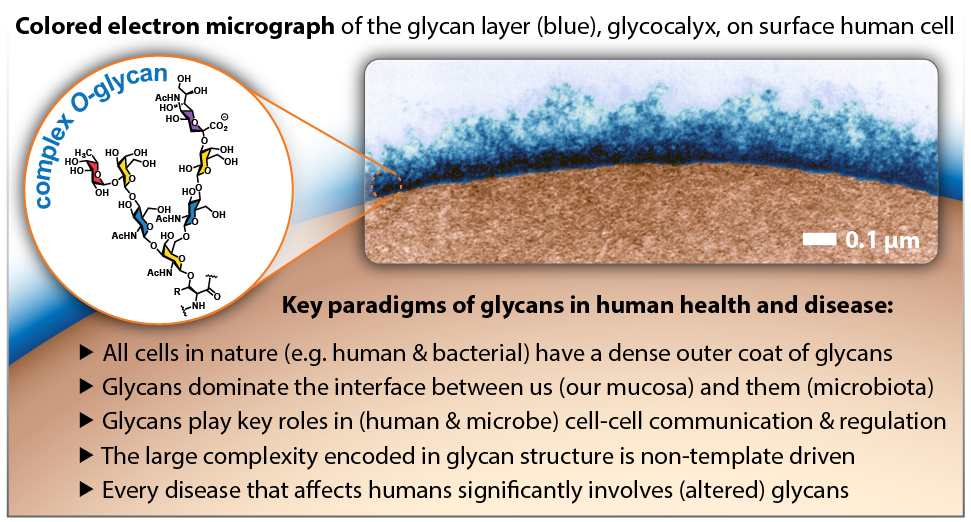WHY GLYCANS? All cells are covered by a dense layer of carbohydrates, called the glycocalyx. These carbohydrates, which are also known as glycans, are often covalently attached to proteins or lipids and usually have highly complex and diverse structures. Glycans are sometimes called ‘the dark matter’ of the biological universe, greatly understudied yet omnipresent in all kingdoms of life and vital to fully understanding biological processes, such as in human health and disease.

Glycans also dominate the microbiota-host interface in our gut and are thus ideally positioned to modulate these interactions between us, our microbiota and amongst the various classes of microbes in it. However, only a rudimentary understanding of the function of glycans and glycoconjugates at a molecular level is available at this interface, which greatly hampers the development of early diagnostics and glycotherapeutics based on this crucial class of biomolecules.With the Sweet Crosstalk team we aim to map these key glycans, glycan protein-interactions, carbohydrate-active enzymes and their dynamics for the individual microbiota members that mediate microbiota-host interactions. These insights will be crucial to understand how these complex bacterial communities influences human physiology in health and disease.

INTERESTED? Watch our short move on illuminating the secret world of glycans with glycoscience.

